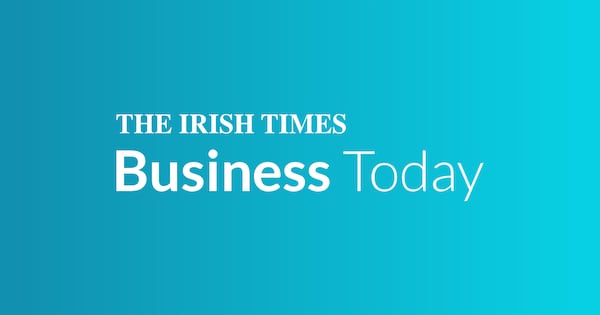The agreement of an outline trade deal between the EU and the US has one main advantage – it avoids an imminent tariffs war between the two sides which could have got nasty.
However, sources say it will take some time to work out the full impact of the deal on Ireland. And there is no doubt that the EU has conceded on a number of points to the US and that this comes with some considerable economic cost. The argument from Brussels will be that this is a price worth paying.
Of vital interest to Ireland will be that it seems that tariffs on EU pharma imports into the US could now rise from zero to 15 per cent. However, reports on Monday suggest that this tariff level will not be applied from the end of this week, like the other tariffs under the new 15 per cent rule.
Instead it will be dealt with by Trump under a separate process in which he is examining key sectors. There is a guarantee to the EU, officials say, that the tariffs on pharma will not exceed 15 per cent. However, Dublin will await full clarity on this - particularly on the point that 15 per cent is now accepted as a cap by Trump.
RM Block
For now - provided the deal can be finally signed off by both sides - the risk of an immediate trade conflict have been averted. US president Donald Trump had threatened 30 per cent tariffs on EU imports from August 1st and the EU had drawn up a list of US goods on which it would impose tariffs of its own.
This could have developed into a tit-for-tat battle. Now, the gunfight is off and the trade weapons are back in their holsters, at least for a while.
Ireland relies heavily on US investment and trade and stood to be particularly exposed if a trade war broke out. Such a scenario would have risked drawing big digital tech companies with large operations here into the fallout.
Peace has broken out, but Trump’s unpredictable nature means dangers and uncertainties still lie ahead. Businesses in most sectors will, once the full details are published, know what they are dealing with in terms of US tariffs and that has a value in itself, as doubt had started to damage investment. It is also worth noting that the EU member states have to approve the deal and there has been some criticism that Brussels is giving too much. This will be a key test for von der Leyen.
What about the terms of the deal? The 15 per cent tariff is well above the average of just under 5 per cent which applied on all EU imports to the US before Trump came to office. Irish businesses have historically been faced with a range of different tariff levels and much will depend on the small print of what was agreed in terms of the impact on various sectors.
It is worth remembering that Trump imposed 10 per cent tariffs on top of existing ones after “Liberation Day” in April and these have remained in place up to now. It now seems that in most cases the 15 per cent will not add to this 10 per cent, but that this new cap includes previous tariffs.
However, Irish companies will wait to see the line-by-line detail. And for some the US market will become a more difficult place to do business as a result. There will particular interest in the food and dairy sector about whether the 15 per cent is the total tariff which will apply here, according to an analysis by Ibec. At the moment tariffs in this sector typically operate on what is called a fixed rate basis - in other words a certain tariff applies for each tonne of product.
Some sectors may escape tariffs. While full details have not been circulated, the EU said there would be “zero for zero” deals discussed in some areas. Drinks or agri-food could be in the frame here, which would be positive for Ireland, depending on the detail. And aviation will escape tariffs, which is good news for Ryanair which imports Boeing aircraft, and for the aviation leasing sector. Some areas of chemicals and generic drugs may also be excluded. The list here is expected by the end of the week - and is also vital for Ireland.
In general, higher tariffs are an economic cost and Ireland will be calculating the impact on jobs and growth and what it means for the budget in October. The promises last week of a €9.4 billion budget package was on the basis of 10 per cent tariffs applying - now the Department of Finance will have to do its sums on what has actually emerged. It may be that the budget sums for October are not hugely affected, though there remain big economic threats here to Ireland in the medium term.
[ The Irish Times view: a step towards stabilityOpens in new window ]
One sector which is vital to Ireland is the pharma sector, and there was some confusion as to how it would be affected by the agreement struck on Sunday. Von der Leyen said that pharma would be covered by the 15 per cent reciprocal tariffs. However, Trump said pharma was “unrelated” to the deal.
Some clarity did emerge on Monday in relation to this. The Trump administration is also examining key sectors like pharma and semiconductors – seen as vital to national security – under a separate process, soon to be concluded, known as the section 232 studies and Trump may see this as his driver of policy in this area.
It now appears that the pharma tariffs will be dealt with under this process - and so will not come into force alongside the other 15 per cent tariffs later this week. However, officials on both sides have said that the maximum tariffs on EU pharma will still be subject to the 15 per cent cap. Ireland will hope that this is, in fact, the case.
Tariffs on 15 per cent on pharma will be costly - and will likely lead in time to lower profits and corporate tax in Ireland. But the uncertainty that worse might be to come could have been even more dangerous.
Trump spoke again on Sunday, before the negotiating part of the meeting, about his determination to bring pharma investment back home for security reasons. And as well as tariffs he has other policy options open to him to try to achieve this, using the huge buying power of the US government and also - possibly - its tax system. This remains a key strategic threat to Ireland.
In the wider picture, Trump is building in baseline tariffs of 15 per cent for many countries, with his key goal being to raise revenue for the US exchequer. For the EU this means businesses from many other countries will face similar barriers, though the UK rate is lower at 10 per cent.
But this will have an economic impact in the US, too, pushing up inflation for consumers and businesses bringing in inputs.
That is the price of tariffs. For now, though, Trump is happy for the US to pay it.













